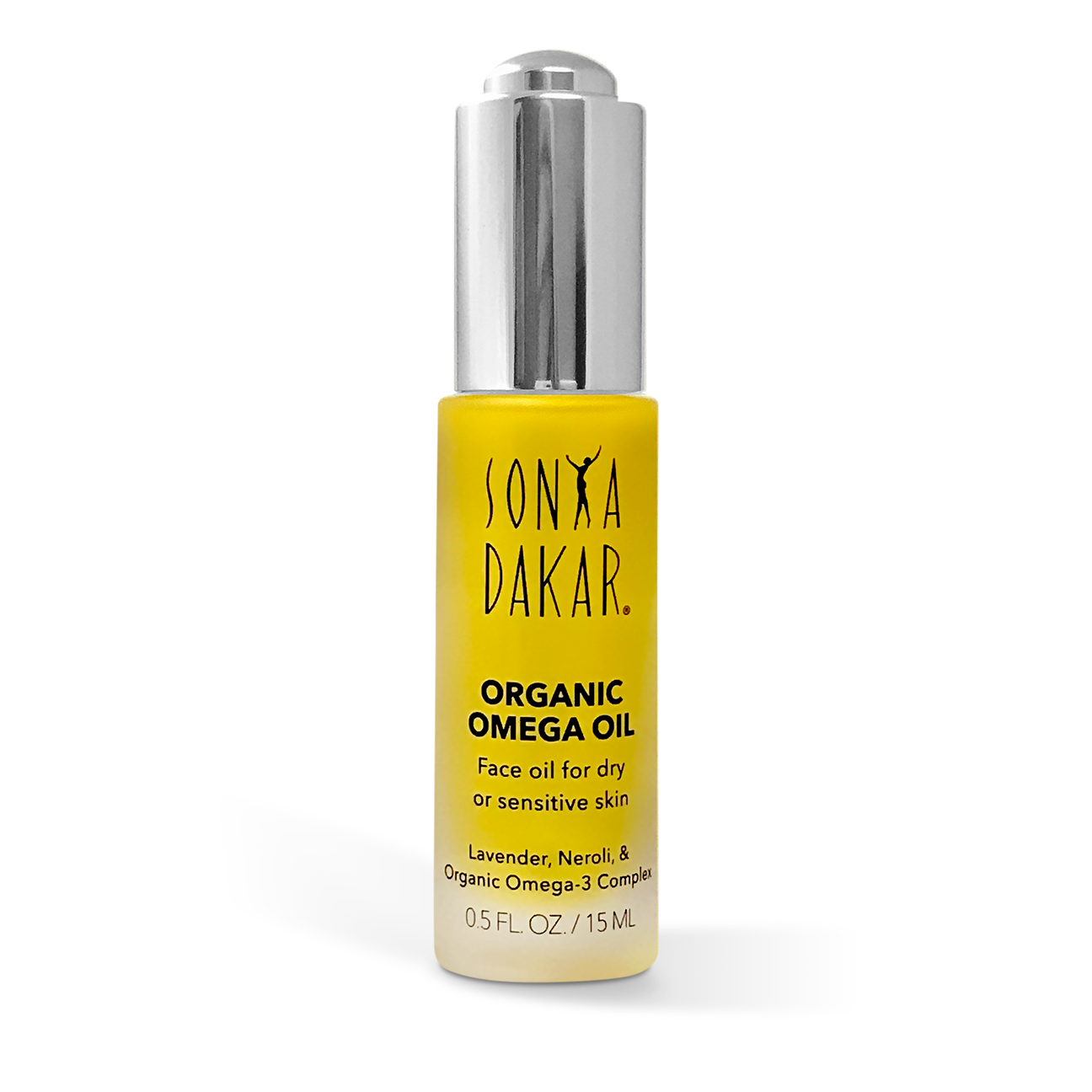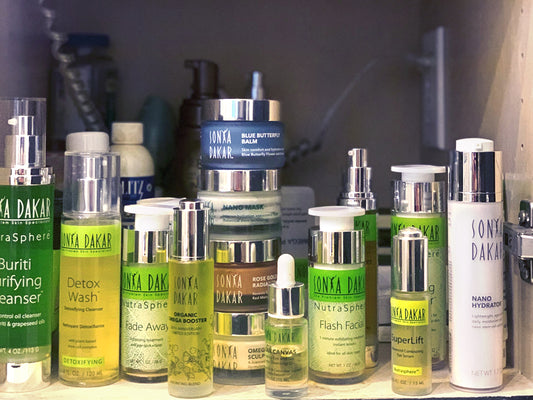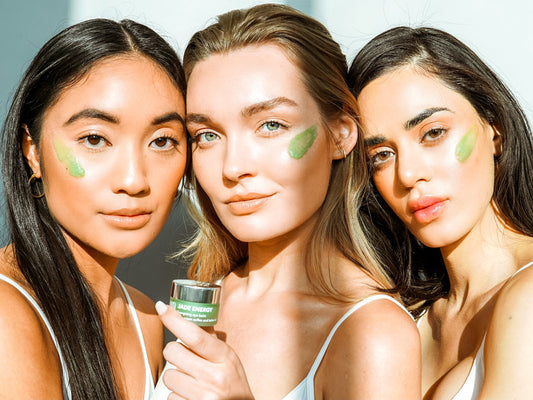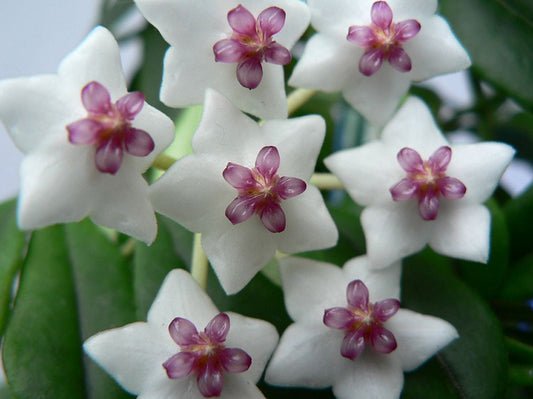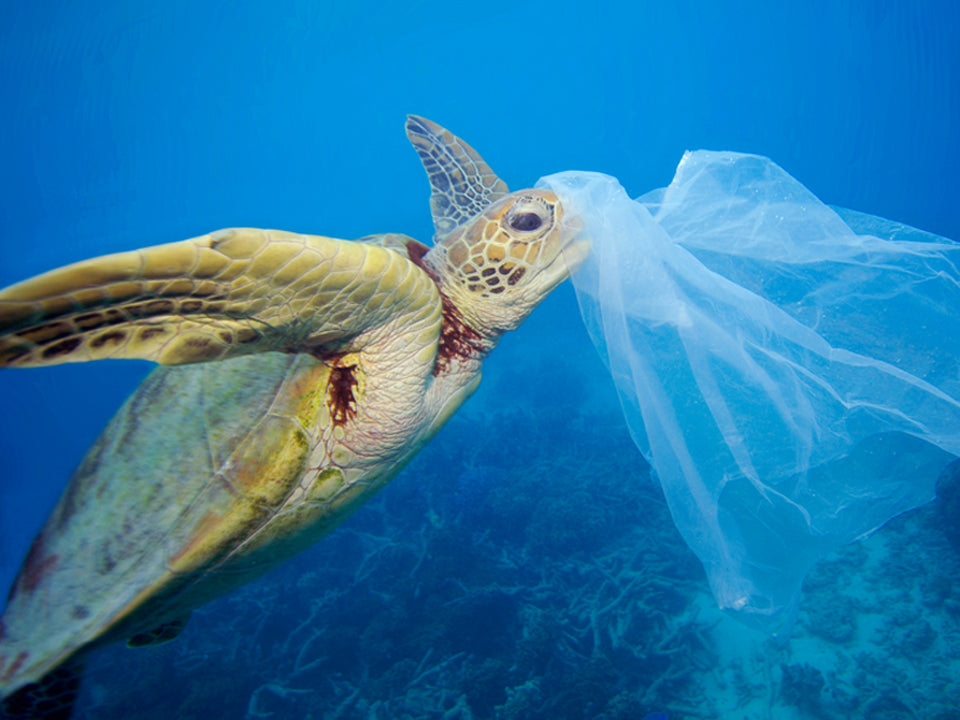
Sonya Dakar reaffirms commitment to eco-friendly packaging
We at SONYA DAKAR are committed to keeping our earth as pristine as possible for future generations. It is for this reason that in 2018 we initiated the phasing out of plastic packaging which we hope to complete by 2022. Our jars, both full size and mini, are now exclusively glass, as are many other items. In addition, we eliminated the use of poly shipping bags and opted for smaller eco-friendly cardboard boxes. When deciding to make the switch to a more eco-friendly packaging, we weighed the pros and cons of using plastic, glass and even aluminum, all of which can be recycled, to determine which would leave the least imprint on the environment.
 The 30th anniversary Organic Omega Booster features and eco-friendly glass bottle
The 30th anniversary Organic Omega Booster features and eco-friendly glass bottle
There were many considerations that play into the environmental impact of these different materials. Factors such as method of harvesting, mining, transporting, processing and “end of life” impact intertwine to create the products’ total environmental impact, which makes these materials difficult to compare.
Plastic
It’s been estimated* that producing a year’s worth of plastic drinking bottles, made of PETE plastic, requires the energy equivalent of between 30-50 million barrels of oil — which translates to producing more greenhouse gas emissions than over a million cars. The production of plastic also requires a tremendous amount of water.
The big concern with plastic is twofold; first, it takes 200-450 years to break down in a landfill. The second, and perhaps even bigger issue is that during this process, the photodegradation releases toxic chemicals into the environment. While some may be careful in recycling their plastic bottles, the same can’t be said for everyone. In addition, depending on the type of plastic used, many consumer goods packaging cannot be recycled, which means added landfill material and further degradation of the environment. Finally, most cosmetic packing is made of styrene acrylonitrile (SAN) or other plastics that cannot be recycled.
Aluminum
While aluminum had a high rate of recycling, the initial production of aluminum oxide is tremendously impactful on the environment. The good news about aluminum is its high rate of recycling and indeed many aluminum consumer packaging is made of recycled material. Unfortunately, the beauty and cosmetic packaging industry has not yet adopted aluminum as a viable primary packaging option.
Glass
While it does take over a million years for glass to decompose, the silver lining is that — should the glass not get recycled — they are inert in landfills, meaning they won’t leach harmful chemicals like plastics. Add that to the fact that, 100% of glass containers are recyclable, and can be recycled endlessly without any degradation of quality, glass starts to seem like a great option. This means in addition to their ability to be recycled on an industrial level again and again, you can personally reuse glass without worrying about it degrading and leaching chemicals into your liquids or creams. Glass has also been a dependable component for beauty products as it’s very compatible with cosmetic formulations.

And finally, a full life-cycle assessment of typical glass, aluminum, and plastic containers in the US found that glass containers have the smallest carbon footprint, making glass the best choice for the new generation of SONYA DAKAR's eco-friendly packaging.
